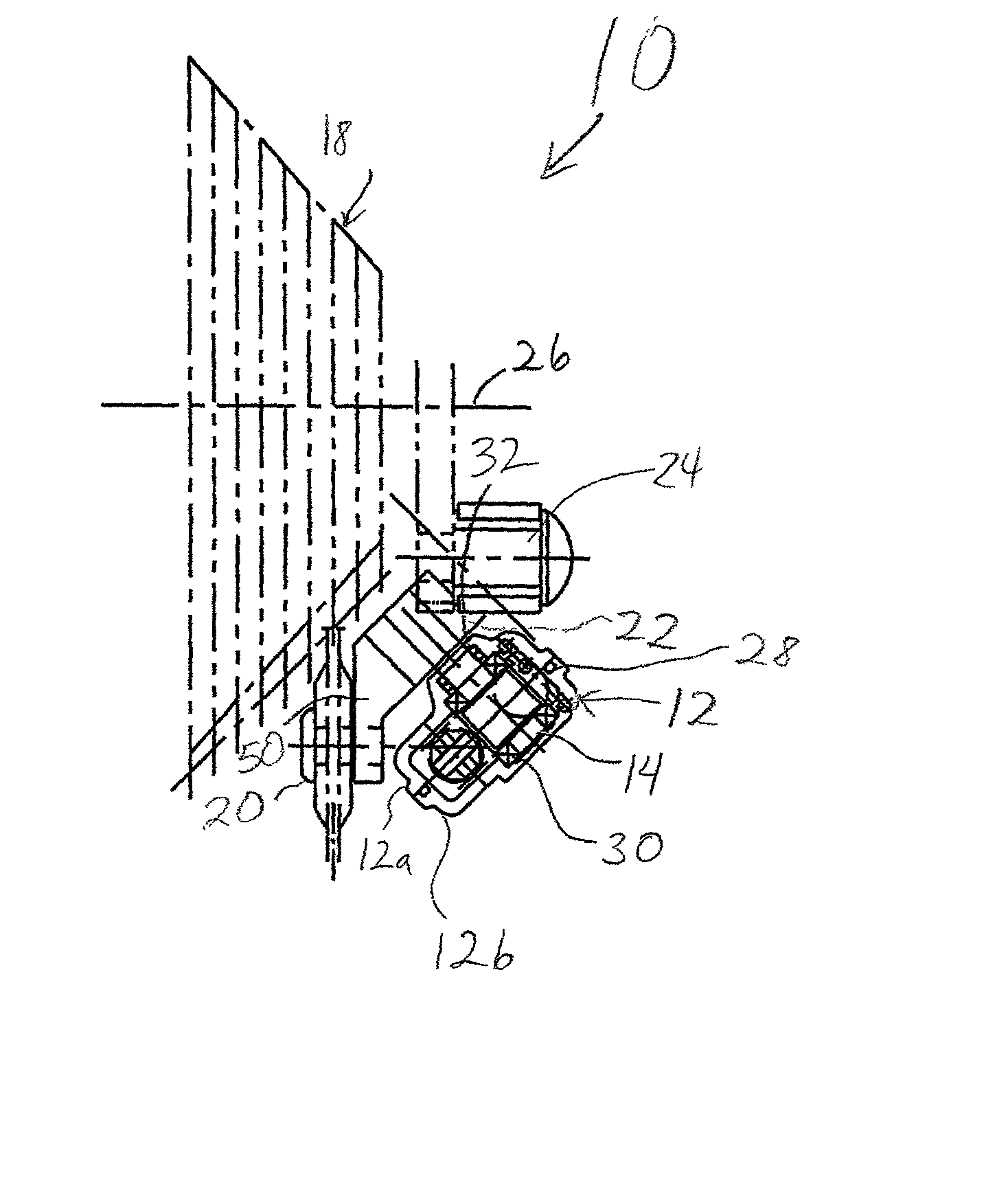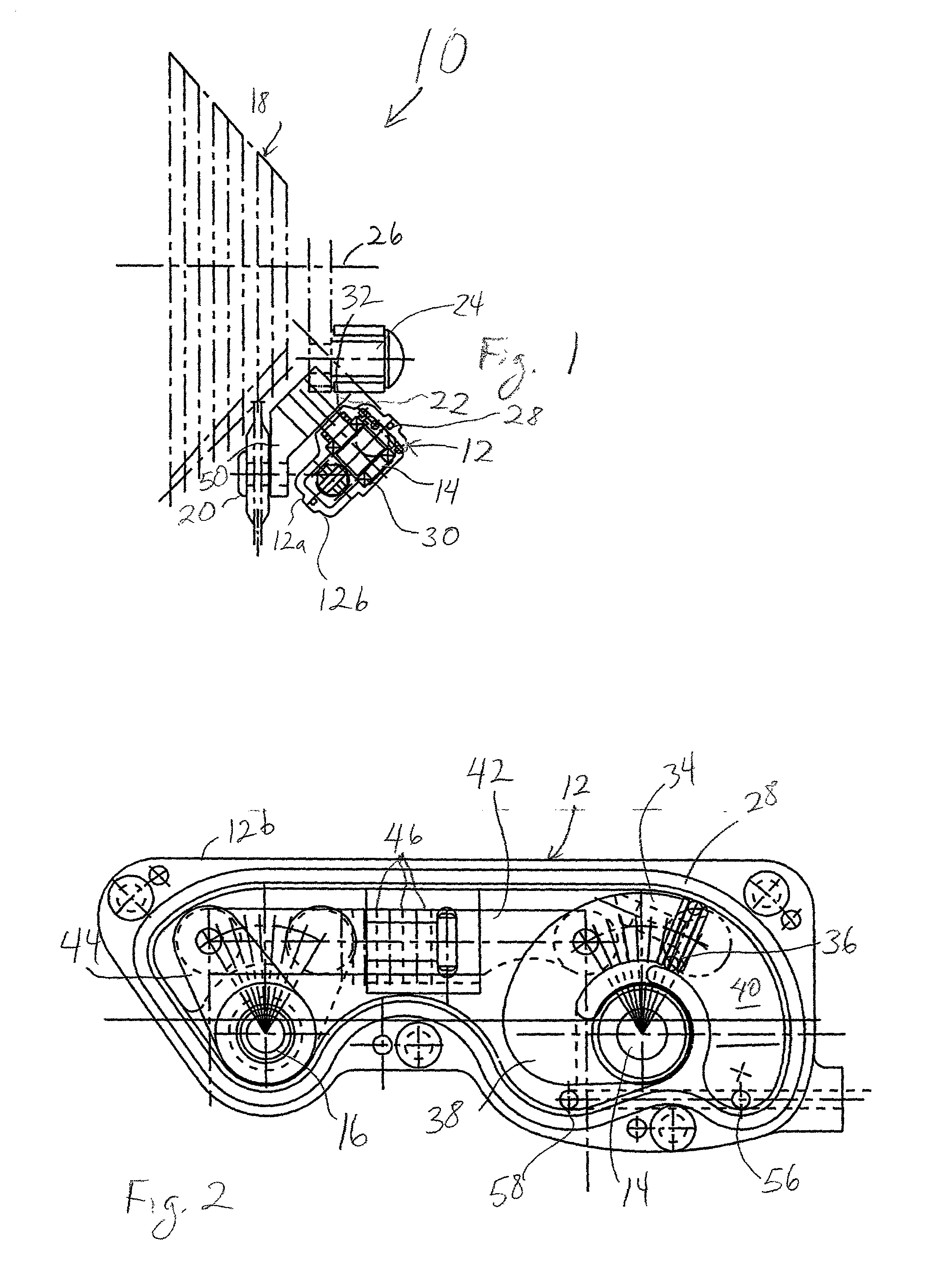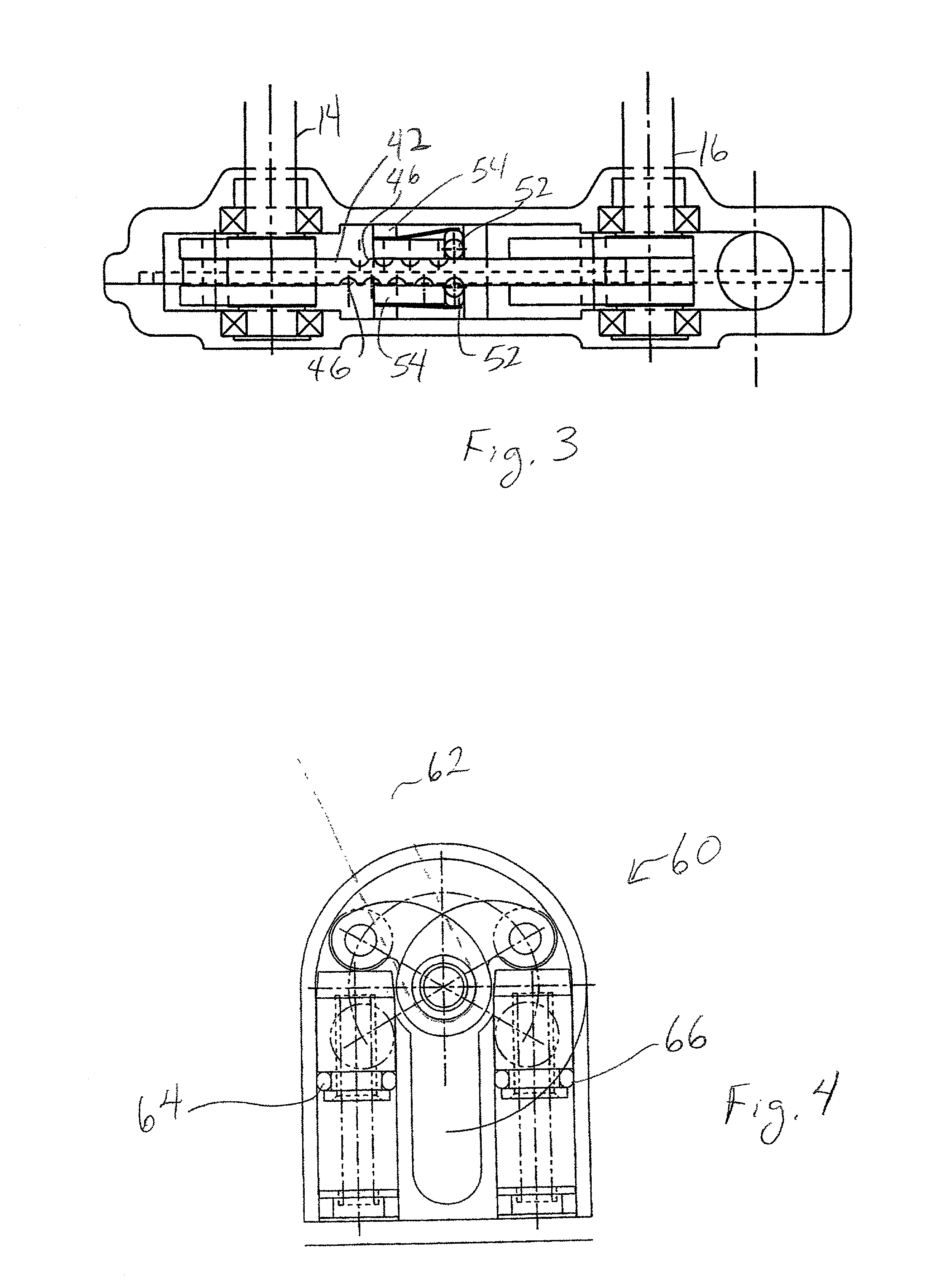Compact hydraulically-operated derailleur shifting system for bicycles
a hydraulically operated, bicycle technology, applied in cycle equipment, transportation and packaging, gearing, etc., can solve the problems of affecting the precision of the derailleur, difficult shifting of the derailleur, and affecting the accuracy of the derailleur
- Summary
- Abstract
- Description
- Claims
- Application Information
AI Technical Summary
Benefits of technology
Problems solved by technology
Method used
Image
Examples
Embodiment Construction
)
[0024] The present invention is directed to a compact, hydraulically-operated rear derailleur shifting system for mountain, road and tandem bicycles. The shifting systems described herein are improvements over the designs disclosed in U.S. patent application Ser. No. 09 / 519,200, and U.S. Pat. Nos. 6,042,495 and 6,012,999, each of which is hereby incorporated.
[0025] The hydraulic shifting systems described in foregoing patents have a number of advantages over cable-operated mechanical shifting systems, especially when these systems are operated in harsh conditions. These conditions could occur on wet, muddy, dusty, or sandy environments and trials that are likely to be experienced where mountain bikes are commonly used. Mud, sand, water, and dust / dirt are especially harmful to the small exposed mechanisms in existing cable operated shifting systems. Equally vulnerable to these conditions is the exposed, unsealed mechanical pull cable that conveys shifting signals from the mechanical...
PUM
 Login to View More
Login to View More Abstract
Description
Claims
Application Information
 Login to View More
Login to View More - R&D
- Intellectual Property
- Life Sciences
- Materials
- Tech Scout
- Unparalleled Data Quality
- Higher Quality Content
- 60% Fewer Hallucinations
Browse by: Latest US Patents, China's latest patents, Technical Efficacy Thesaurus, Application Domain, Technology Topic, Popular Technical Reports.
© 2025 PatSnap. All rights reserved.Legal|Privacy policy|Modern Slavery Act Transparency Statement|Sitemap|About US| Contact US: help@patsnap.com



